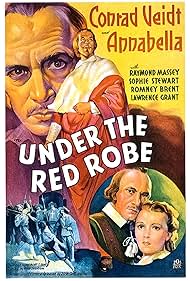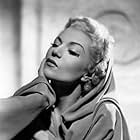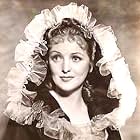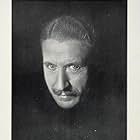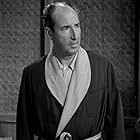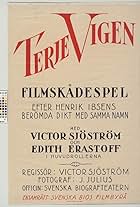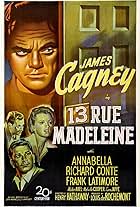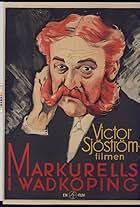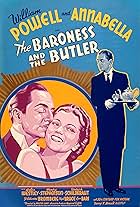Cardinal Richelieu spares the life of a convicted duelist (Veidt) provided he will capture the leader of the Huguenots.Cardinal Richelieu spares the life of a convicted duelist (Veidt) provided he will capture the leader of the Huguenots.Cardinal Richelieu spares the life of a convicted duelist (Veidt) provided he will capture the leader of the Huguenots.
Photos
- Edmond, Duke of Fiox
- (as F. Wyndham Goldie)
- Clon
- (as Balliol Holloway)
- Louis
- (as Shayle Gardner)
- Leval
- (as Ben Soutten)
Storyline
Did you know
- TriviaThis film received its earliest documented USA telecasts in Chicago Sunday 4 September 1949 on WGN (Channel 9), in Detroit Sunday 11 September 1949 on WWJ (Channel 4), in Atlanta Wednesday 28 September 1949 on WSB (Channel 8), in Boston Sunday 16 October 1949 on WBZ (Channel 4), in Cincinnati Sunday 13 November 1949 on WLW-T (Channel 4), in Philadelphia Sunday 27 November 1949 on WFIL (Channel 6), in New York City Friday 13 January 1950 on WPIX (Channel 11), in Los Angeles Friday 24 February 1950 on KTLA (Channel 5) and in San Francisco Monday 10 April 1950 on KGO (Channel 7).
- Quotes
Cardinal Richelieu: Where did you find your Englishman?
Gil de Berault: I overtook him 50 miles from Calais.
Cardinal Richelieu: What did he say?
Gil de Berault: Nothing, your Eminence.
Cardinal Richelieu: Typically English. What did he do?
Gil de Berault: Fought, your Eminence.
Cardinal Richelieu: Typically English. And then?
Gil de Berault: We had an excellent fight, your Eminence.
Cardinal Richelieu: Did you leave him dead?
Gil de Berault: Oh... not very.
- ConnectionsRemake of Under the Red Robe (1923)
As ever the man demonstrates a keen sense for orchestrating shots and scenes. Between his vision, and the eyes of James Wong Howe and Georges Périnal with their vivid, dynamic cinematography, we see the same especial talent for allowing the setting to somewhat become a character in its own right. Rich detail in each exquisite set, and careful use of light and shadow, helps every space to stand out and lend flavor to the scene. The effect isn't as pronounced as in early classics like 'A man there was' or 'The outlaw and his wife,' but still one must commend Sjöström, his photographers, and the crew for such splendid work. The production design and art direction really are terrific, and so is the costume design and hair and makeup. Those sparing stunts or effects that are employed look great, and I'm further pleased with the humor and cleverness that fills small corners of the screenplay (not least with supporting character Marius). Nothing about 'Under the red robe' is so remarkable as to leap out and grab our attention, perhaps, yet like those tinges of particular wit, little bits and pieces scattered throughout together comprise a viewing experience that is highly enjoyable and solidly satisfying.
One does wonder what this might have looked like had it been produced as a silent movie. I can't help but think at times that Arthur Benjamin's music, though pleasant, is superfluous; there are times when even dialogue and sound effects seem excessive and unnecessary. Maybe this says more about me and my love of the silent era, but I'm also inclined to think Sjöström is likely to have agreed that the earnest simplicity of those bygone techniques are missed here. Whether as a product of his direction or the cast's own similar notions, there are points when even the acting feels needlessly embellished, or possibly a smidgen forced, with the administration of spoken dialogue. Still, for what it's worth - despite any such thoughts that might enter one's mind - overall I believe the Swede shaped a fine, absorbing title, and the cast give strong performances. That includes premier silent star Conrad Veidt, firmly commanding the lead role; mononymous Annabella, shining brightly as love interest Marguerite; and Romney Brent, as silver-tongued and five-fingered sidekick Marius. Moreover, 'Under the red robe' ably balances facets of drama, adventure, and romance, with touches of comedy peppered on top, and the result really is a reliable good time.
If I'm being honest I had mixed expectations when I sat to watch. Despite my adoration of Sjöström, this was both a sound feature and his last one after all, and for a man who excelled so greatly in the silent era those two notes are ill harbingers. Ultimately I feel this film does distinctly stop short of the pure brilliance of, say, 'The wind,' or 'He who gets slapped, and that includes a certain looseness in the narrative writing, with sometimes weaker connections between ideas. Yet though imperfect, by and large I think it's one last grand testament to the Sjöström's skills, that he was able to push through his own misgivings and craft a movie that does still stand rather tall. To the extent that 'Under the red robe' is in any way lesser than, I'd argue it's only a step behind. For anyone who is a fan of older cinema this remains well worth checking out if one has the chance, and it earns my glad, hearty recommendation.
- I_Ailurophile
- Mar 11, 2023
- Permalink
Details
- Runtime1 hour 20 minutes
- Color
- Sound mix
- Aspect ratio
- 1.37 : 1
Contribute to this page

